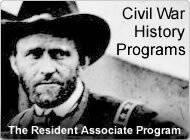
A Pathway To Freedom: Maryland's Underground Railroad
The Smithsonian Associates Civil War E-Mail Newsletter, Volume 8, Number 6
Because of its location just below the Mason-Dixon Line, Maryland occupied a pivotal place in a secret network of trails and sanctuaries known as the Underground Railroad. This was the last "station" that separated North from South - and freedom from bondage - for countless slaves secreted across back roads and waterways.
Harriet Tubman completed the daring journey repeatedly during the 1800s, having escaped from a plantation in Dorchester County to become the railroad's most famous "conductor." Today, Maryland's Eastern Shore keeps her legacy alive with sites and attractions like the Harriet Tubman Museum and Educational Center.
In and around Cambridge, visitors can see the small church where Tubman worshipped, as well as a humble marker noting her approximate birthplace. An officially designated Maryland Scenic Byway called the "Underground Railroad Trail" spans 64 miles, with stops not only dedicated to Tubman, but also fellow conductor Samuel Green and others who joined the fight for freedom.
West of the Chesapeake Bay, beyond sites like the Baltimore Civil War Museum and historic Hampton mansion (once the largest house in the country, where more than 340 slaves labored), the Sandy Spring Slave Museum features a slavery-era log cabin. Other points of interest include property once owned by anti-slavery proponents in Bethesda, Rockville and Frederick.
Farther south, the Hollywood-based Sotterley Plantation has a rare slave cabin and outbuildings beside the Patuxent River. To the north in Thurmont's Cunningham Falls State Park, free and enslaved West Africans labored at the Catoctin Furnace to produce iron for Revolutionary and Civil War arms. Harriett Tubman is the subject of special tours and markers in Cambridge, while the Hampton National Historic Site features a Georgian mansion, slave quarters and a family cemetery.

A wealth of little known facts about Maryland's renown African American citizens--from the Civil War era, to music greats Cab Calloway and Billie Holliday; to today's heroes, boxer Sugar Ray Leonard and Beatrice Foods founder Reginald Lewis--can be found at the Maryland Tourism website: www.mdisfun.org.
Download the publications, plan a trip, follow the maps, read some books, have fun, and learn something!

